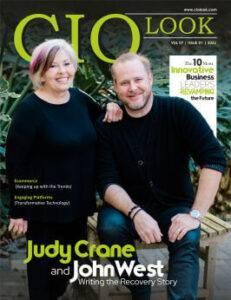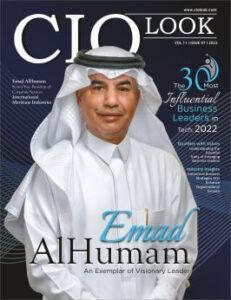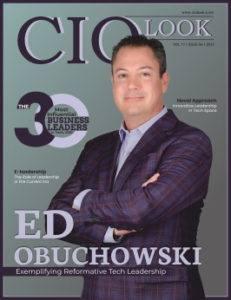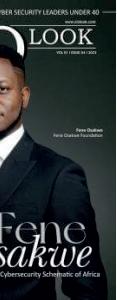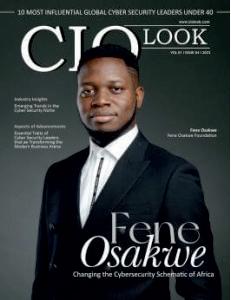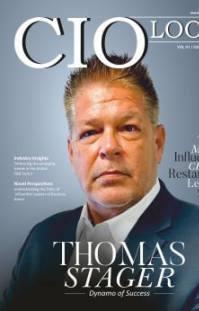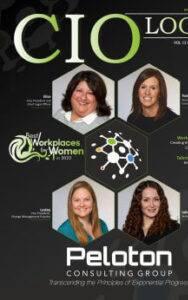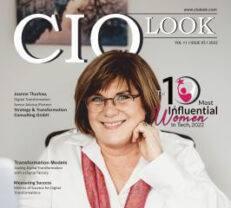
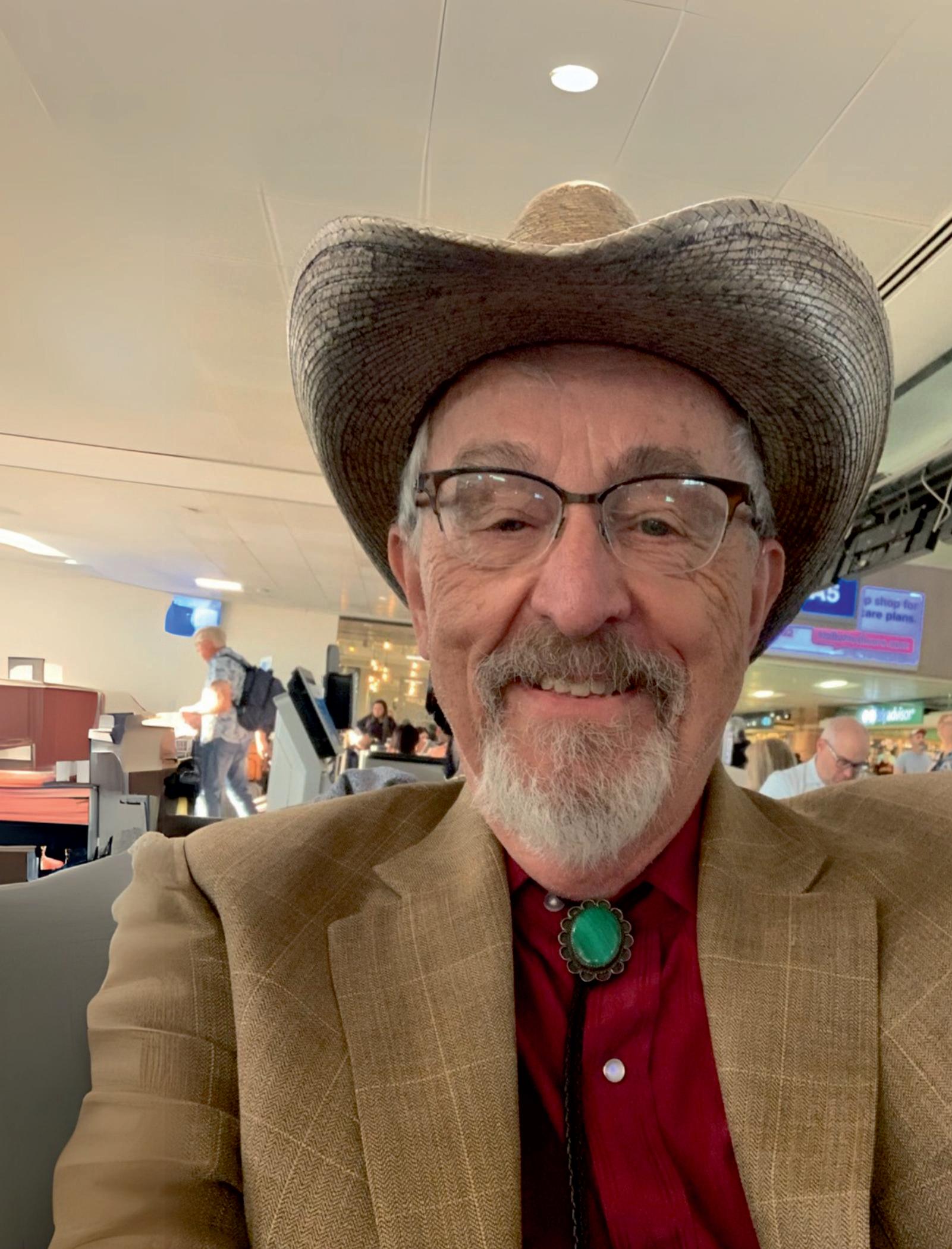

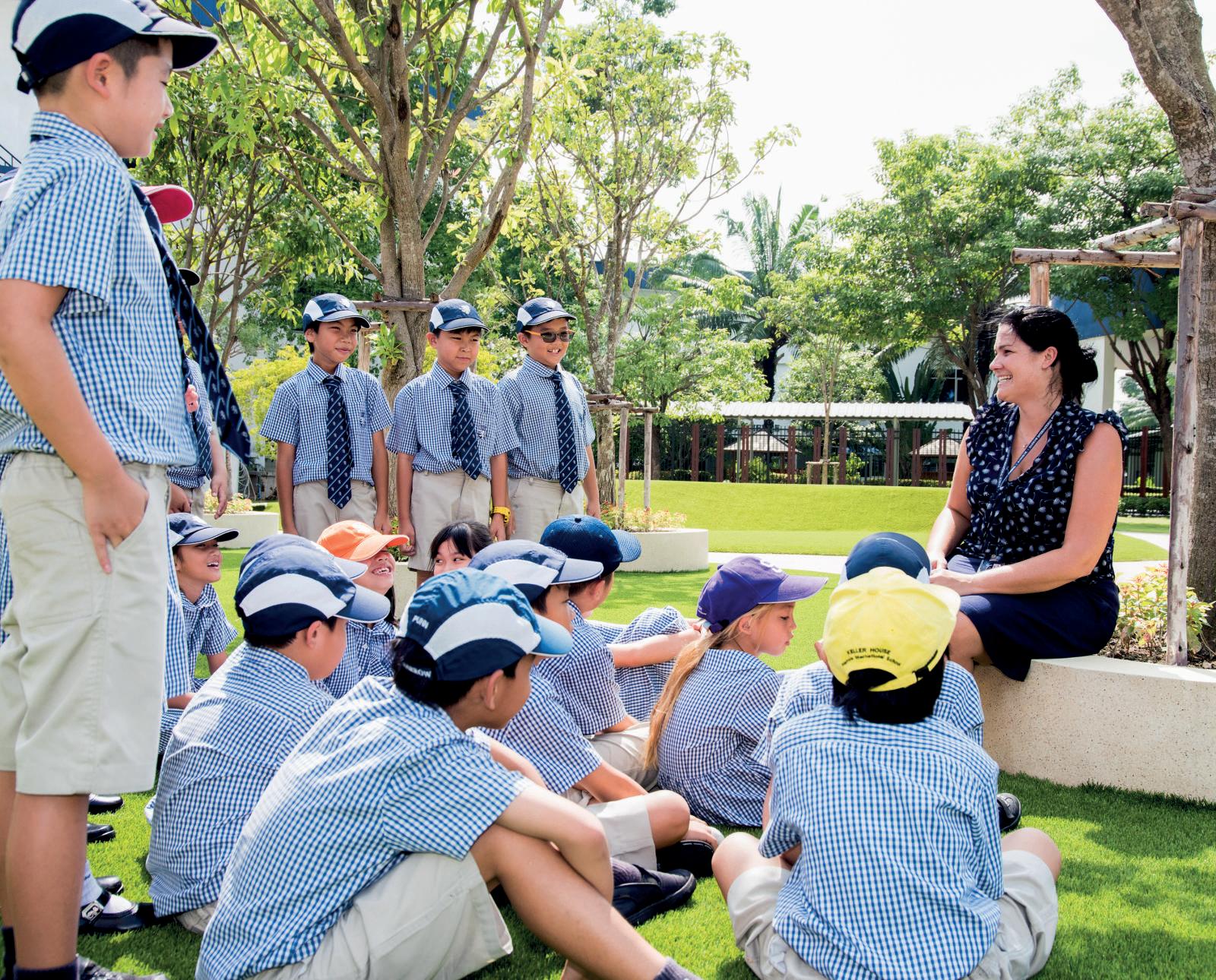

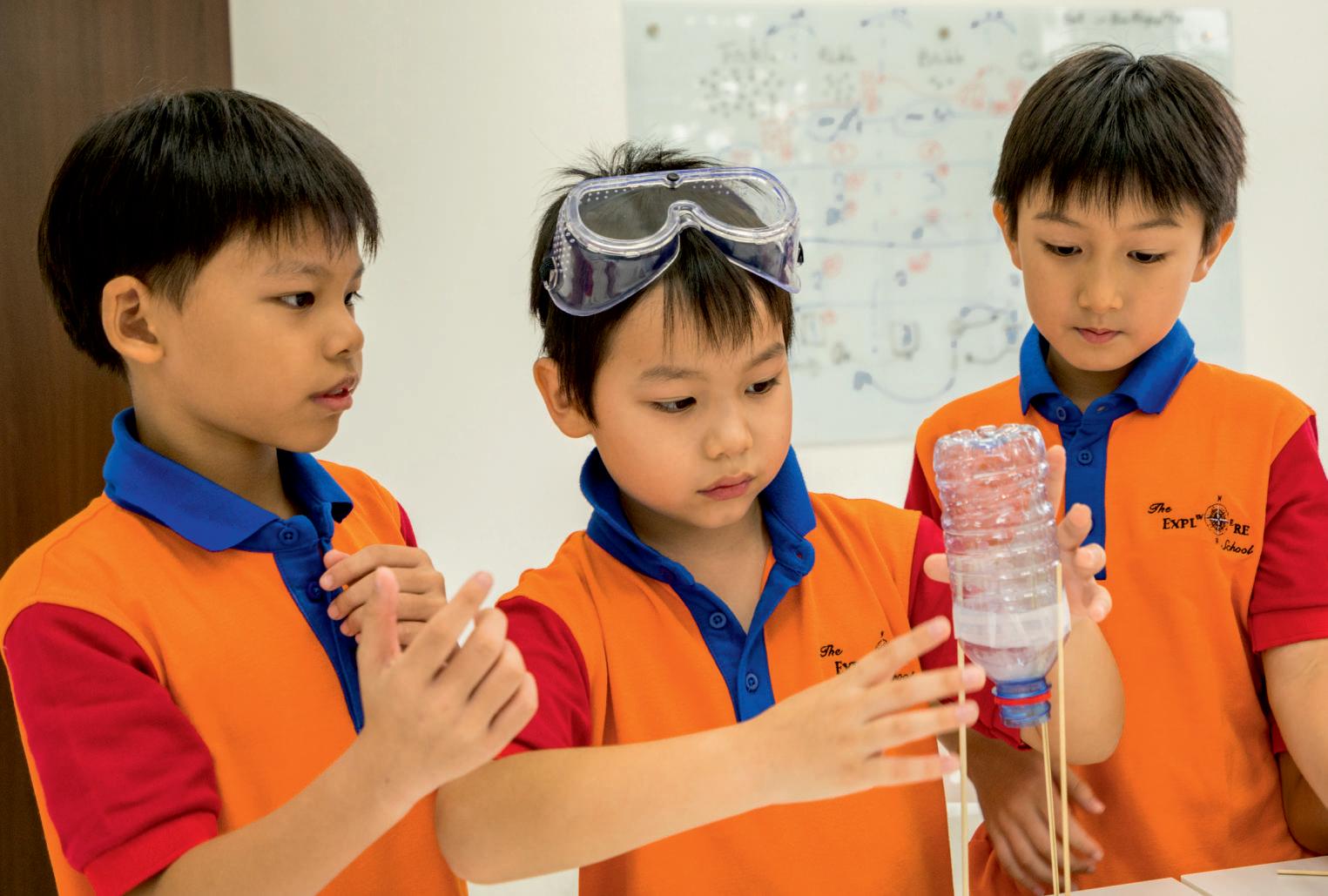
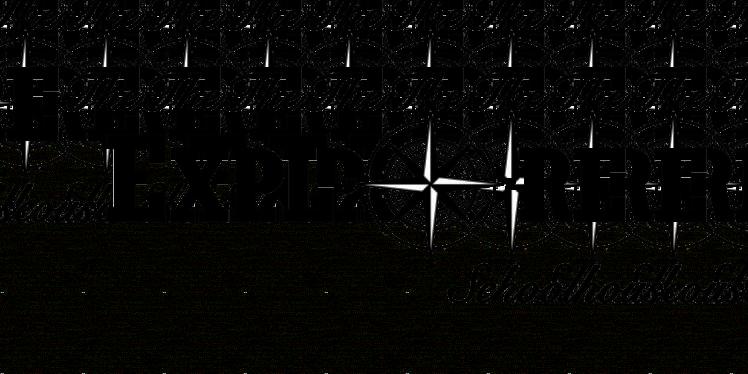













Inaneradefinedbyrapidtechnologicaltransformation
andshiftinglearnerexpectations,educationstandsata remarkablecrossroads.TheriseofEdTechisnolonger atrendit’saglobalmovementthatisreimagininghow knowledgeisaccessed,shared,andapplied.Thisspecial editionofCIOLook, World’s Top 10 EdTech Disruptors Shaping the Future of Learning in 2025,celebratesthe visionariesandinnovatorswhoarenotjustrespondingto change,butboldlydrivingit.
FrompersonalizedlearningplatformsandAI-powered assessmentstoimmersivevirtualclassroomsandinclusive educationmodels,thesetop10EdTechleadersare redefiningtheeducationalexperienceforstudentsofall ages.Theyrepresenttheconvergenceofinnovationand impact,wheretechnologymeetspurposetocreate meaningfullearningoutcomes.Whatsetsthemapartisnot justtheirtechprowess,buttheirunwaveringcommitment toequity,accessibility,andlifelonglearning.

Aseditors,wehadtheprivilegeofexploringthemindsand missionsbehindthesegroundbreakingcompanies.Their storiesremindusthatdisruptionisnotaboutchaosit’s aboutcourage,creativity,andtheconstantpursuitofbetter Intheirjourneys,wefindasharedbelief:thateducation mustevolvetoprepareindividualsnotjustforthejobsof tomorrow,butforthechallengesoftoday.
Thiseditionismorethanarecognitionitisatestamentto thetransformativepowerofEdTechinnovation.Whether you’reaneducator,policymaker,technologist,orlearner, wehopetheseinsightsinspireyoutothinkbeyond conventionalboundariesandembracethepossibilitiesthat lieahead.


A R T I C L E S

A Superintendent's Guide Strategic Planning for Edtech Innovation
Leading Edtech Innovation Change Management Strategies for Academic Institutions
PoojaMBansal Editor-in-Chief
CONTENT
Deputy Editor Anish Miller
Managing Editor Prince Bolton

FOLLOWUSON WE ARE ALSO AVAILABLE ON
www facebook.com/ciolook/ www.x.com/ciolookmagazine
DESIGN
Visualizer Dave Bates
Art & Design Director Davis Mar�n
Associate Designer Jameson Carl
SALES
Senior Sales Manager Wilson T., Hunter D.
Customer Success Manager Nelson M.
Sales Execu�ves Tim, Smith
TECHNICAL
Technical Head Peter Hayden
Technical Consultant Victor Collins
Research Analyst Eric Smith
SEO Execu�ve Alen Spencer
Email info@ciolook com
For Subscrip�on www.ciolook.com CONTACTUSON
Copyright © 2025 CIOLOOK, All rights reserved. The content and images used in this magazine should not be reproduced or transmi�ed in any form or by any means, electronic, mechanical, photocopying, recording or otherwise, without prior permission from CIOLOOK. Reprint rights remain solely with CIOLOOK.
FeaturedPerson
AdelAldalbahi
AssociateProfessorof ElectricalEngineering
DulceVasquez
AssistantVice President
KingFaisalUniversity kfu.edu.sa
ArizonaStateUniversity asu.edu
JamieHagan
AdvancedSkills
Teacher-Associate SeniorLeader
JoumanaAbdo HeadofMath Department
Prof.RanaSobh ProfessorofMarketing andDeanofthe CollegeofBusiness andEconomics
RaniaObeid Educational Consultant
RichardCLarson Professor
SanaaKaddoura AssistantProfessor ofComputerScience
SerineBrahim ProjectManager
ZeenathRezaKhan
FoundingPresident andBoard Member
GEMSFounders SchoolDubai gemsfoundersschool-dubai.com
AdelAldalbahiisadistinguishedacademicandresearcher specializinginelectricalengineering,withexpertisespanning advancedelectronics,powersystems,andemerging technologies.
Dulceisemergingasaformidableforceineducationadvocacy, civicengagementandleadership
AlMawakebAlGarhoud garhoud.almawakeb.sch.ae
QatarUniversity qu.edu.qa/sites
AlMotaqademaSchools yaschools.com
MIT mit.edu
ZayedUniversity tougaloo.edu
EmiratesLiterature Foundation elfdubai.org
ENAIWGCentre forAcademic Integrityuowdubai.ac.ae/ academic-integrity/ enai-wg-centre-academic-integrity
Jamiebringsextensiveexperienceandexpertisetothe classroom,providingsupport,guidance,andtrainingtofellow teacherstoenhanceteachingpracticeandstudentoutcomes.
JoumanaAbdoisadedicatededucatorandacademicleader withextensiveexpertiseinmathematicseducationand curriculumdevelopment.
Prof.RanaSobhisaninspirationforpurpose-drivenexcellence andresilienceinthelandscapeofhighereducationleadership.
RaniaObeidisadedicatedEducationalConsultantwitha passionforenhancinglearningexperiences,curriculum development,andinstructionalstrategies.
Prof.Larson’sworkhasinfluencedreal-worldapplications acrosspublicinfrastructure,emergencyresponse,urban planning,andtechnologypolicy.
DrSanaaKaddouraholdsaPhDincomputersciencefrom BeirutArabUniversity,Lebanon.Sheiscurrentlyemployedas anAssistantProfessorofComputerScienceatZayed University,UnitedArabEmirates.
Serineoverseestheplanning,execution,anddeliveryof projects,workingcloselywithcross-functionalteamsto achieveprojectobjectivesandmeetstakeholderexpectations.
Zeenathisonesuchleaderwhoisadistinguishedacademician withamultifacetedroleinacademia.

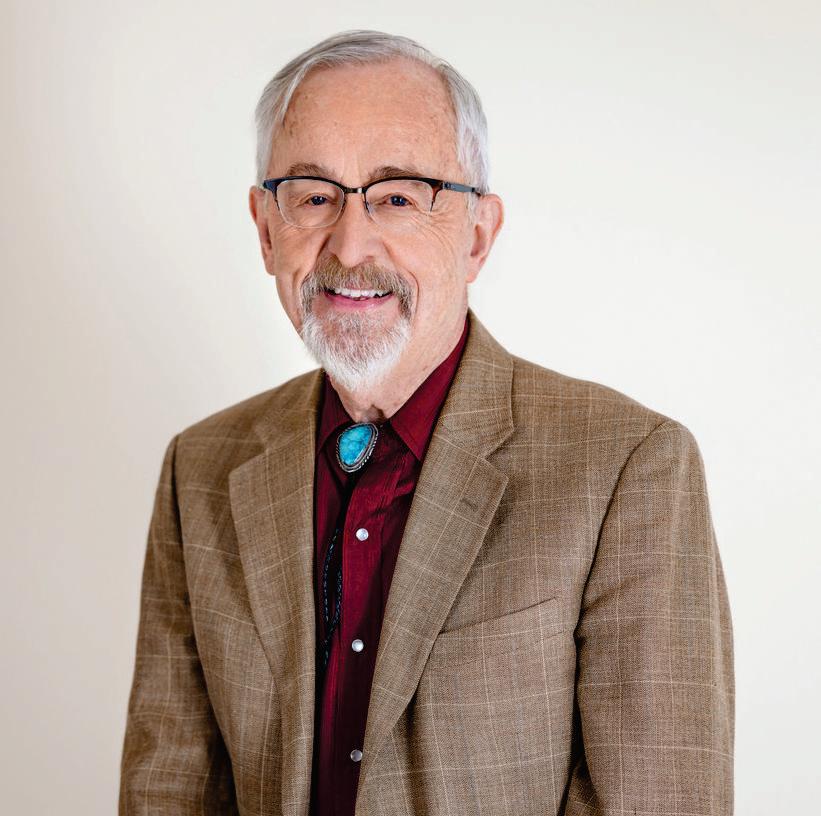


















"The beautiful thing about learning is that no one can take it awayfromyou."–B.B.King
Fewindividualsembodythespiritoflifelonglearning as profoundly as Richard Larson With a career spanning decade in research, academia, and innovation,hehascontinuallysoughttopushtheboundaries of knowledge while inspiring those around him to do the same.Frompioneeringbreakthroughsinqueueingtheoryand operations research to shaping modern approaches in educationanddecisionscience,hiscontributionshaveleftan indelible mark on both theoretical and applied disciplines.
More than just an academic, he has always viewed educationasapowerfultoolfortransformation,onethat extendsbeyonduniversityhallsandintoeverydaylife.
Beyond his professional achievements, Richard’s journeyisalsoadeeplypersonalone.Hiscareerwas intertwinedwiththeunwaveringsupportofhislate wife, Mary Elizabeth Murray ("Liz"), whose partnershipplayedanintegralroleintheirshared mission of expanding access to quality education. Whether presenting at international conferences, developing innovative learning models, or mentoring future researchers, Richardhasremainedcommittedtointellectual explorationandthebettermentofsociety.Even in retirement, his passion for MODEL-Based Thinking and knowledge dissemination continues to drive his efforts, proving that the pursuitoflearningisnotjustaphasebutawayof life.
Richard attributes much of his success to a fortunate beginning—being admitted to MIT as a freshman at just18aftergraduatingfromNeedhamHighSchool.His fatherinitiallyhopedhewouldcommutetosaveoncosts, butLarson’sexperiencetookadifferentturnwhenhejoined the Phi Beta Epsilon (PBE) fraternity. Unlike most MIT fraternities located across the Charles River, PBE was on MemorialDrive,rightoncampus,providinghimwithacloseknitcommunitythatbecameinstrumentalinhisacademicand personal growth. He fondly recalls the camaraderie and support he received from fellow members, which made his MITjourneyallthemoreenriching.
His passion for learning deepened, leading him to pursue graduatestudiesandultimatelyearnaPhDinOperations Research. As he approached the completion of his
dissertation, his faculty advisor, Professor Alvin W. Drake, unexpectedly offered him an opportunity to stay on as an Assistant Professor Initially hesitant, Larson experienced what he calls the “Groucho Marx syndrome”—doubting whether he belonged in a faculty role so soon after being a studenthimself.
However, he accepted the offer, gradually rising through the ranks to become a tenured professor. His decision to stay at MIT for the long term was driven by a deep intellectual curiosity and a love for the academic environment that had nurturedhim.
ForLarson,themostgratifyingaspectofhisacademiccareer was engaging with students, both in the classroom and throughresearchmentorship. “While lecturing was fulfilling, it was the deeper academic relationships formed through advising and supervising graduate students that I cherished the most. These close interactions fostered a culture of innovation and intellectual curiosity, often leading to groundbreaking research that was published in respected academicjournals.”
He took immense pride in witnessing his students push the boundariesofknowledge,makemeaningfulcontributionsto theirfields,andgoontoachieveremarkablesuccessintheir careers. “Teaching, for him, was never just about imparting information—it was about shaping minds, nurturing critical thinking, and fostering a sense of academic rigor and creativity Seeing students develop into thought leaders and innovators brought him unparalleled fulfillment, reaffirming his belief in the transformative power of education.” Says Larson
Although retired from active teaching and advising, Larson remainsdeeplycommittedtointellectualdiscourseandpublic engagement.Hisfocushasshiftedtowardsmakingcomplex ideas more accessible to a broader audience, a mission he pursuesthroughhisbook,MODELTHINKINGForEveryday Life This work encapsulates his philosophy that effective decision-makingandproblem-solvingrelyonunderstanding conceptual and exemplary models. His goal is to equip individuals with the tools to think more critically, solve problems efficiently, and make informed decisions in everydaylife.
Larsonfirmlybelievesintheideathatcontinuouslearningis the foundation of a meaningful and fulfilling life. He often quotes Einstein’s philosophy: “A day without learning is a daywasted.”Forhim,learningdoesnothavetobeconfinedto academic pursuits—it can be as simple as observing new behaviors in a pet or as profound as discovering a breakthrough in a research problem. He emphasizes that curiosity should be a lifelong habit, encouraging people to seekknowledgeinbothexpectedandunexpectedplaces.
Someofhismostintriguinglearningexperiencescamein the form of insights gained through dreams. On two separate occasions, he found solutions to complex research problems in his sleep—once at around 3:00 AM,whenheawoketodocumenthisfindings.Oneof these instances involved his Hypercube Queueing Model, which became a critical framework for optimizing urban emergency response services. These moments reinforced his belief that the mind continues to process and solve problems even when at rest His commitment to intellectual exploration remains unwavering, evenafterdecadesofacademicachievement.
Larson’s contributions extend well beyond the classroom and the MIT campus. He has been actively involved in supporting educational initiatives, including his past work with Notre Dame Cristo Rey High School. He believes that educationshouldnotbelimitedtoeliteinstitutions but should be accessible to students from diverse backgrounds who aspire to create a better future for themselves.

“As part of his legacy at MIT, I decided to make a lasting contribution by funding an endowed Faculty Chair in Data, Systems, and Society, now recognized as the Larson Chair This endowment ensures that future generations of scholars and educators will continue to push the frontiers of knowledge in these critical fields.”Hiscommitmenttogiving back reflects his deep-seated belief in education as a transformative force, capable of shaping not just individual livesbutentirecommunitiesandindustries.
No successful career is without its challenges, and Larson’sjourneywasnoexception.Oneofthemost
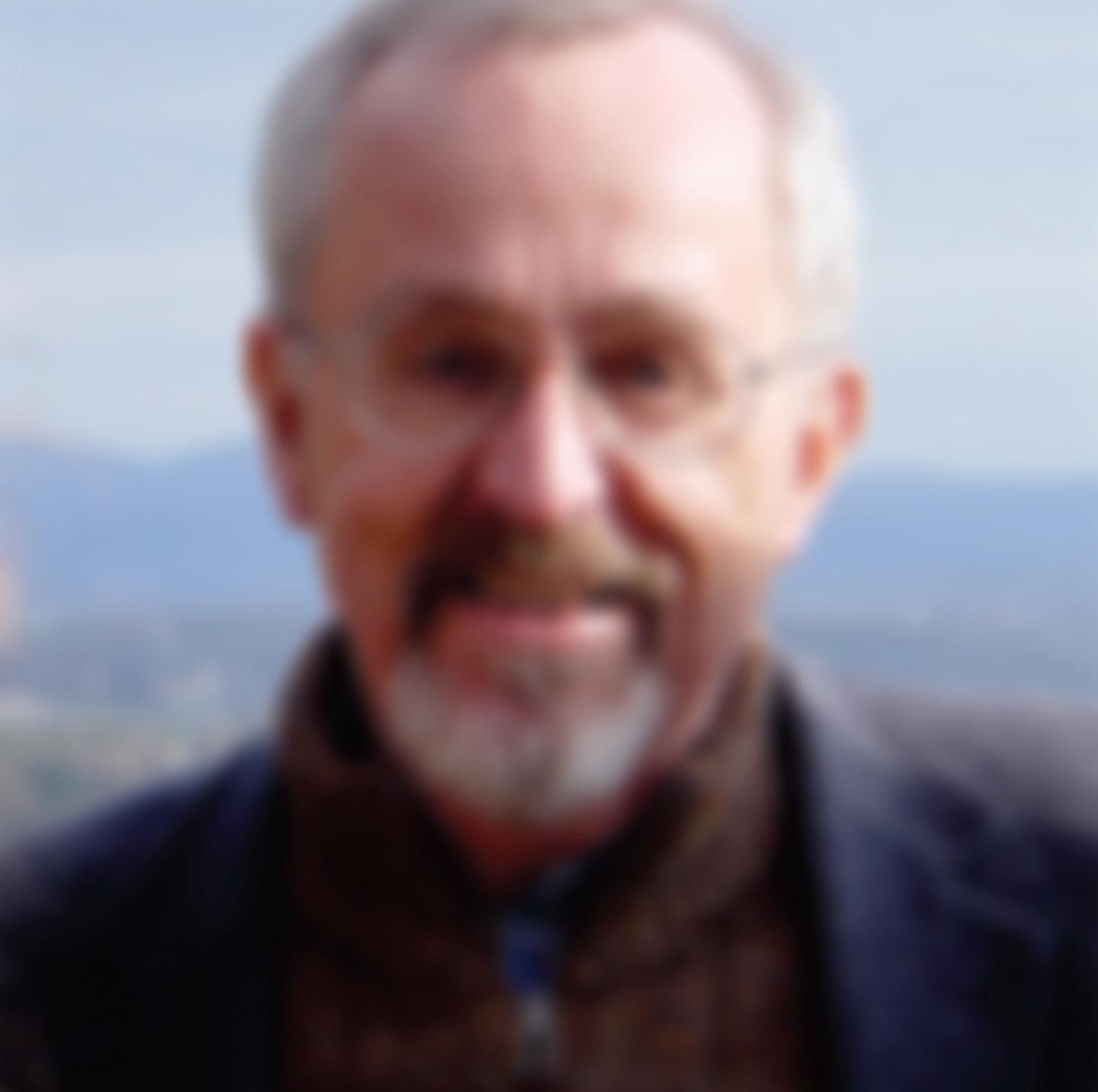


















humbling moments of his early academic career occurred when he was a graduate student working as a Teaching Assistant In a large lecture hall, a student asked for clarification on an equation he had just written on the blackboard. To his dismay, he realized that he could not adequately explain it—something he attributes to his own lackofdeepunderstandingofthematerialatthatmoment.
From that day forward, he dedicated himself to meticulous preparationbeforeeverylecture,ensuringthathethoroughly understood his subject matter and could address any reasonable student question with clarity and confidence. This commitment to preparation not only made him a better educator but also instilled in him a lifelong disciplineofintellectualrigor Hisexperienceservesas a reminder that challenges, while sometimes uncomfortable, can be instrumental in fostering growthandexcellence.
Throughout his distinguished career, Richard Larson successfully balanced his professional commitments with his personal life, embracing both with passion and dedication. Before his retirement,heheldmultipleroles—servingasa respected educator, a prolific researcher, and, most importantly, a devoted husband to his soulmate,MaryElizabethMurray("Liz").Their 43-year journey together was marked by unwavering support, intellectual collaboration, and a shared commitment to education. Their marriage was blessed with three wonderful children, who have now brought the joy of four grandchildrenintothefamily
Liz played an integral role in his professional life, not only as a source of encouragement but also as an active participant in his academic endeavors. She took on a leadershippositionastheManageroftheMITBLOSSOMS online education program, where she worked alongside him to expand access to quality learning resources worldwide. Together,theytraveledextensively,presentingBLOSSOMS and other educational initiatives to diverse audiences. One particularly memorable moment was Liz confidently addressing a large audience in Saudi Arabia, sharing their visionwithhundredsofattendees.
BeyondhisworkatMIT,shealsosupportedhisconsulting company, ENFORTH Corp , ensuring that his
professional aspirations were met with her expertise and guidance Her passing, nearly two years ago, left an immeasurable void in his life, and not a day goes by that he does not think of her. However, her legacy endures through their shared contributions to education, their impact on students,andthemanylivestheyinfluencedtogether
Although now retired, Larson continues to observe the evolutionofeducationandresearchwithgreatinterest. “One of the most transformative trends in recent years, in his view, is the rapid advancement of Artificial Intelligence (AI). AI is reshaping education, research, and various industries in unprecedented ways. It presents both exciting opportunities and significant challenges, particularly in the realm of academia.”
One of his concerns is the growing use of AI-generated content in student learning. With students now able to complete assignments with minimal effort using AI tools, issues surrounding academic integrity and genuine intellectual engagement have become more pressing





Inthelastdecade,educationhasundergonearemarkabletransformation
fueledbydigitaldisruption Classroomsarenolongerconfinedtofour walls and chalkboards; today, education is increasingly defined by intelligent platforms, personalized learning experiences, and virtual collaboration.AttheheartofthistransformationliesEdTechinnovation,a force that has reimagined how knowledge is created, delivered, and consumed.
However, driving this innovation requires more than just deploying technology; it demands intentional, long-term strategic planning that aligns vision,infrastructure,people,andpurpose
UnderstandingtheScopeofEdTechInnovation
EdTechinnovationreferstotheapplicationofmoderntechnologiestoimprove learning outcomes, teaching methodologies, and the overall education ecosystem This includes everything from adaptive learning algorithms and AI-driven tutoring to gamified learning platforms and virtual labs But innovationinitselfisnotthegoalitstruevalueliesinsolvingreal-world problemsineducationsuchasaccessibilitygaps,learnerengagement,and outdatedcurricula.
Toensurethatinnovationtranslatesintomeaningfulimpact,educationleaders must treat technology as an enabler not the solution That’s where strategic planningbecomesindispensable
LayingtheGroundwork:VisionandGoalSetting
Strategicplanningstartswithaclear,compellingvision.Institutionsmustask: Whatdowewantlearningtolooklikefiveortenyearsfromnow?Whetherit’s empoweringteacherswithreal-timedatainsightsorcreatinginclusivedigital classrooms for learners with disabilities, a focused vision sets the tone for purposefulinnovation.
Following vision-setting, specific, measurable goals should be crafted For instance,auniversitymightaimtoincreaseonlineenrollmentby40%overthe nextthreeyearsorbooststudentretentionbyintegratingAI-poweredanalytics.

Thesegoalsserveasguidepoststhatshapeinvestmentdecisions andimplementationstrategiesaroundEdTechinnovation.
Behind every successful EdTech initiative is a solid digital backbone Strategicplanningmustincludeanhonestassessment of an institution's technical readiness. Are there high-speed internet connections across all campuses? Are educators and studentsequippedwiththerightdevicesandtools?Aresystems interoperableandsecure?
The infrastructure must also support scalability Apilot project thatworksfor100studentsmustbeabletofunctionefficientlyfor 10,000 Thisincludescloudstorage,cybersecurityframeworks, andintegrationwithLearningManagementSystems(LMS).
Equallyimportantisfosteringanecosystemwhereinnovationcan thrive this means forming partnerships with startups, investors, content creators, and even government bodies that can collectivelyenhancethereachandefficacyofEdTechsolutions
Technology doesn’t transform education people do. Strategic planningforEdTechinnovationmustthereforeprioritizecapacity building among educators and learners Teachers need professional development programs to confidently incorporate digital tools into their pedagogy Similarly, students must be trainedindigitalliteracy,especiallyinregionswhereaccessto technologyisstillachallenge.
Moreover, involving stakeholders parents, administrators, students,andpolicymakers intheplanningprocessensuresthat the innovation is grounded in the real needs of the community Whenusersfeelheardandempowered,theadoptionrateofnew technologiessignificantlyimproves
Dataisapowerfultoolinshapingeffectivestrategies.Through analytics, institutions can gain insights into learner behavior, courseeffectiveness,dropoutrates,andmore Theseinsightsnot only help refine ongoing projects but also forecast trends that guidefutureplanning
Strategic planning for EdTech innovation should include the development of data governance frameworks ensuring ethical collection,usage,andstorageofinformation.Transparencyand accountabilityinhowdataisusedcanfostertrustamongusersand protectthemfrompotentialrisks
OneofthebiggestchallengesinsustainingEdTechinnovationis funding Strategic plans must account for both initial capital investment and long-term financial sustainability This may involveexploringblendedfundingmodelsgrants,public-private partnerships,institutionalbudgets,andevensubscription-based revenuemodels.
Further,it’simportanttomonitorROInotjustinfinancialterms, but also in educational impact How has innovation improved learneroutcomes?Hasitreducedcostsforstudentsorimproved accessibility for marginalized groups? These metrics help determinewhichinitiativesdeservescalingorrefining
Innovation inevitably brings change and change often brings resistance Strategic planning must anticipate and manage this resistance by promoting a culture of experimentation and learning Leaders must communicate the ‘why’ behind every innovationandcelebratesmallwinstobuildmomentum
Pilot programs, feedback loops, and continuous improvement models can ease the transition. By making stakeholders active participants in the change process, organizations can reduce frictionandfosteraculturethatembracesEdTechinnovation
LookingAhead:TheFutureofStrategicPlanninginEdTech
Astechnologieslikeartificialintelligence,augmentedreality,and blockchain evolve, the landscape of education will continue to shift.Theinstitutionsthatthrivewillbethosethatdon’tjustadopt technology,butplanforitstrategically.Thatmeansbeingagile, learner-centered,andfuture-focused.
Intheend,EdTechinnovationisn’tabouthavingtheflashiesttools orthemostapps it’saboutusingtechnologywithintent,guided byadeepunderstandingofeducationalneedsandaclearroadmap to meet them. When strategy and innovation go together, educationbecomesnotjustsmarter,butmorehuman.
StrategicplanningisthecompassthatensuresEdTech innovationremainspurposeful,inclusive,andimpactful.By aligningvision,infrastructure,people,anddataundera cohesivestrategy,educationalinstitutionscanunlockthe truepotentialoftechnology—notasadisruptor,butasa partnerinshapingthefutureoflearning.





Intoday’srapidlyevolvingeducationallandscape,academicinstitutions
are under increasing pressure to adapt to new technologies, changing studentexpectations,andemergingpedagogicalmodels.Attheheartof thistransformationliesapowerfulforce:edtechinnovation
Whiletheintegrationofeducationaltechnologiescanunlocknewpotentialsin learningandadministration,thejourneytowardmeaningfulchangeiscomplex andrequirescareful,strategicmanagement
For decades, traditional academic institutions have operated under hierarchical,paper-based,andoftenrigidframeworks However,thedigitalera demands agility, data-driven decisions, and a more personalized learning experience Studentsarenolongerpassiverecipientsofknowledge theyare activeparticipantswhoexpectseamless,tech-enabledengagement.Thisshift necessitates a thorough reevaluation of curriculum delivery, assessment methods,andinstitutionalinfrastructure.
Edtech innovation, including AI-powered tutoring systems, cloud-based learning management platforms, and immersive tools like virtual reality, provides opportunities to reimagine education However, change cannot simplybeimposed Fortransformationtotakeroot,institutionsmustaddress cultural resistance, provide adequate training, and align technological integrationwiththeircoreeducationalmission.
Successfulchangebeginswithaclear,sharedvision Leadersmustarticulate how edtech innovation aligns with the institution’s long-term goals be it improved learning outcomes, wider accessibility, or operational efficiency
Thisvisionshouldnotbeconfinedtotheboardroom.Faculty,administrative staff,students,andevenalumnishouldbeinvolvedinshapingandrefiningit. Ownership across levels creates a sense of collective responsibility and motivation.

Tobuildtrust,leadersmustemphasizethattechnologyis notreplacingeducatorsbutempoweringthem.For example,learninganalyticscanhelpinstructorsidentify strugglingstudentsearly,whileautomationof administrativetaskscanfreeuptimeforresearchand mentoring.
Resistancetochangeoftenstemsfromfear—fearofthe unknown,fearofobsolescence,orfearoffailure. Addressingtheseconcernsrequirestransparencyand empathy.Institutionsshouldfosteropencommunication channels,suchastownhalls,surveys,andpilotprograms, togatherfeedbackandmakestakeholdersfeelheard.
Facultydevelopmentisespeciallycritical.Manyeducators maybeexpertsintheirfieldbutlackconfidencein navigatingnewdigitaltools.Providingprofessional developmentworkshops,one-on-onecoaching,andpeer learningnetworkscanbridgethisgap.Likewise,students shouldbetrainedonhowtoeffectivelyusethetechnologies introducedtothem,ensuringequityandinclusivityinthe adoptionprocess.
Onecommonpitfallisattemptingtooverhaulsystems overnight.Changeshouldbeincrementalanddatainformed.Pilotprogramscanserveastestinggroundsto evaluatetheeffectivenessofspecifictoolsorstrategies. Oncethesearerefinedbasedonreal-timefeedback,they canbescaledacrossdepartmentsorcampuses.
Forinstance,aninstitutionmightbeginbyintroducinga singleedtechinnovation,likeadigitalattendancetracker, withinonefaculty.Ifsuccessful,themodelcanthenbe rolledoutelsewhere.Thismeasuredapproachreducesrisk andbuildsconfidenceovertime.
Moreover,scalabilityshouldalsoconsiderinfrastructure andbudgetconstraints.Cloud-basedsolutions,forexample, offerscalablestorageandusercapacity,makingthemideal forinstitutionswithlimitedITresources.
Changemanagementisnotaone-timeevent—itisan ongoingprocess.Institutionsmustestablishclearmetricsto measuresuccess,whetherit'sincreasedstudent engagement,reduceddropoutrates,orimprovedfaculty
satisfaction.Theseindicatorsprovideinsightintowhat's workingandwhatrequiresadjustment.
Regularevaluationsandauditsallowforcoursecorrection. Feedbackloops,intheformofanalyticsdashboardsor quarterlyreviewmeetings,enableinstitutionstomake informeddecisionsandremainagile.Celebratingsmall winsalsohelpsmaintainmomentumandmorale.
Perhapsthemostimportantelementofanychange managementstrategyisculturaltransformation.Institutions thatthriveintheageofedtechinnovationarethosethat embraceamindsetofcontinuouslearningand experimentation.Thismeansencouragingcuriosity, toleratingfailure,andrewardinginitiative.
Leadershipmustmodelthisbehavior Whenleadersshow theyarewillingtolearn,adapt,andtakecalculatedrisks,it setsthetonefortheentireorganization.Furthermore, recognizingthecontributionsoffaculty,staff,andstudents inthechangejourneyfostersasenseofcommunityand sharedsuccess.
Academicinstitutionsstandatthecrossroadsoftradition andtransformation.Whilethejourneytoadoptedtech innovationisfilledwithchallenges,italsopresentsaunique opportunitytoreimaginethefutureofeducation.Effective changemanagementrequiresmorethanjustnewtools—it demandsvision,empathy,collaboration,andalong-term commitmenttogrowth.
Byaligningtechnologywithpedagogicalvaluesandputting peopleatthecenteroftheprocess,institutionscannavigate changewithconfidenceandclarity Thegoalisnotjustto keeppacewithtechnologicaladvancements,buttoharness themtocreatericher,moreinclusive,andmoreimpactful learningexperiencesforgenerationstocome.









